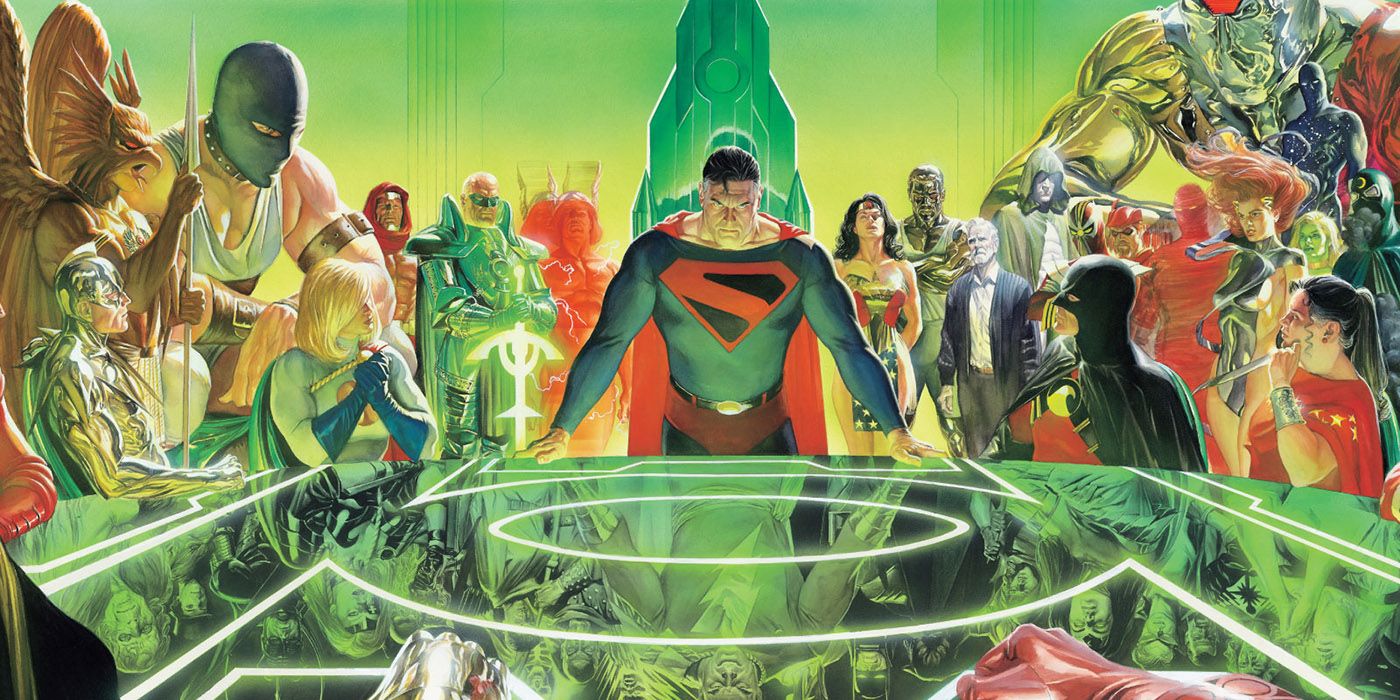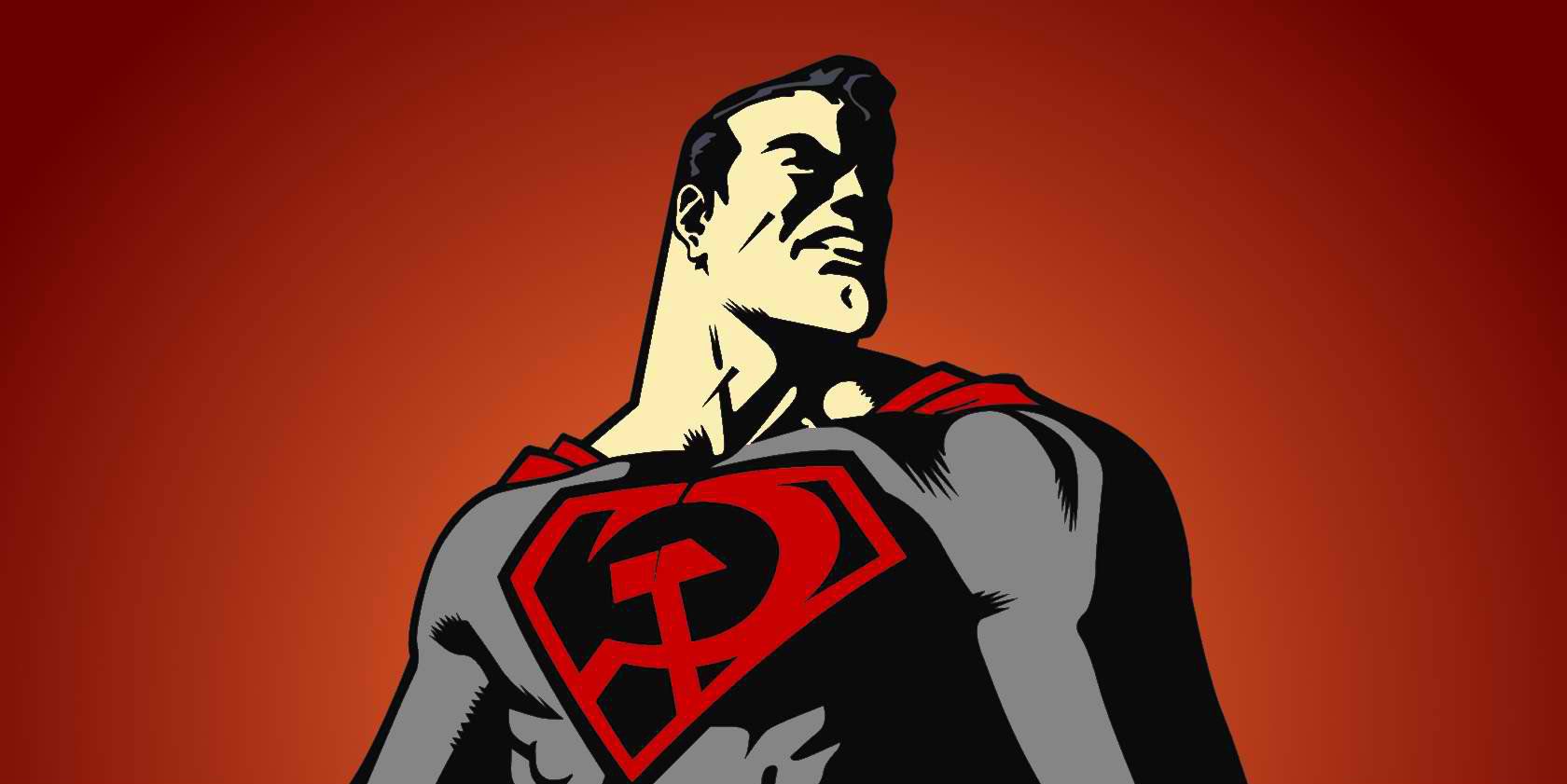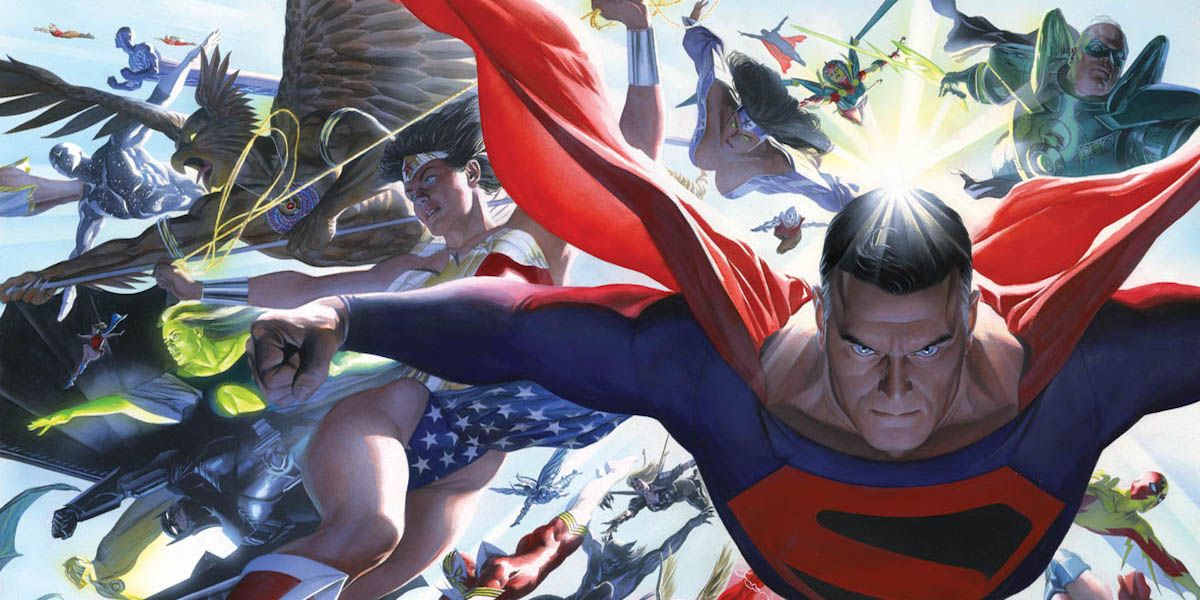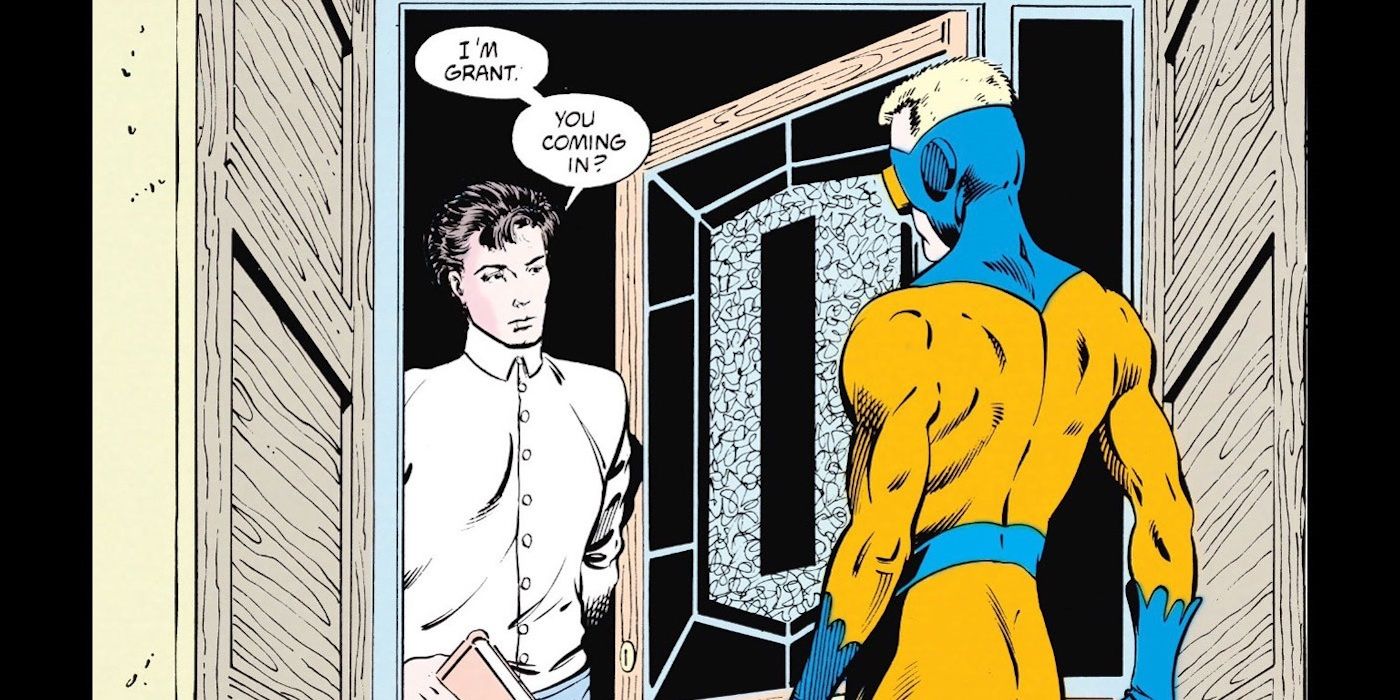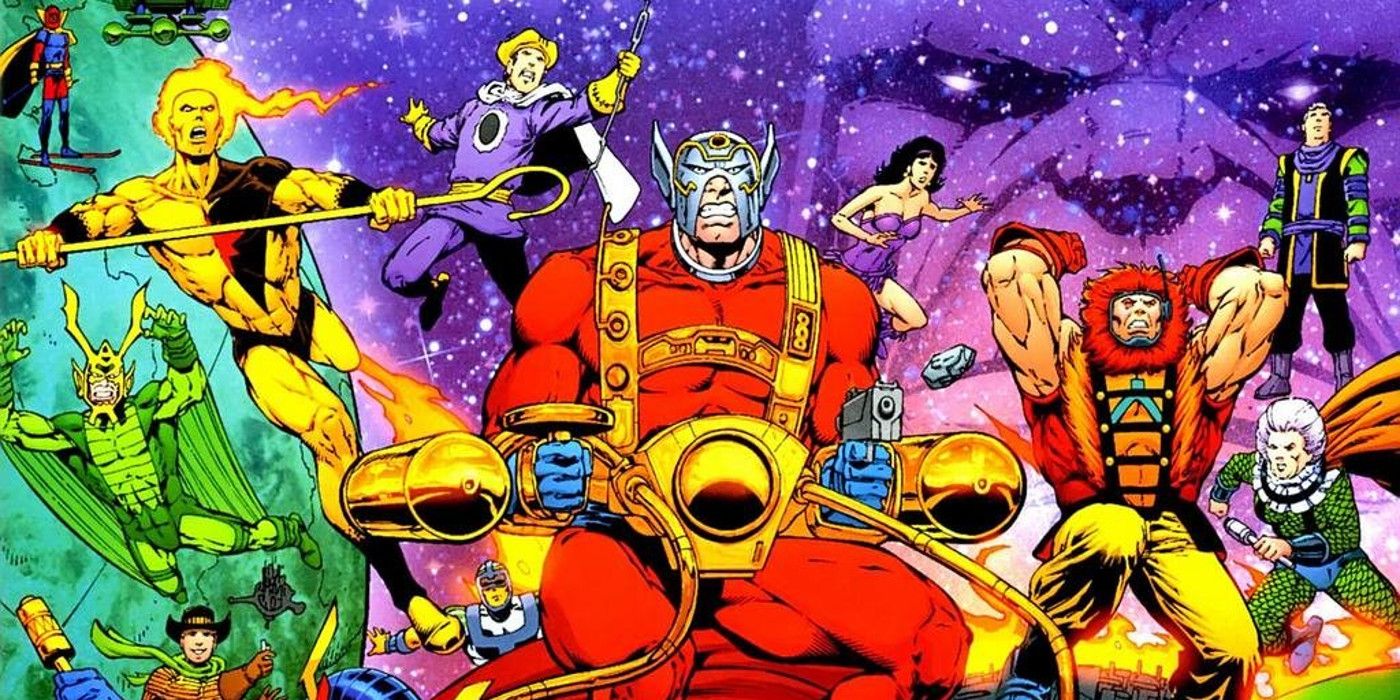DC's cinematic universe has had difficulty in establishing itself creatively, tonally, and critically. The handful of films they have released were met with either controversy or outright rejection, until the touchstone Wonder Woman movie. However, with the troubled birth of the Justice League movie creating greater doubts about the DCEU than before, Warner Bros. has been scrambling to find a way to grow their brand while mitigating the potential disaster of their shared universe. The answer may lie in DC's multiverse.Over the years, DC grew their brand by releasing audacious alternate universe stories. Publishing under the Elseworlds banner, these stories further mythologized their characters in the way of oral tradition: stripping characters down to their core values and reimagining them in a different setting and in different circumstances. The mitochondrial connections are all there but focus on new perspectives. Of late, Warner Bros. has expressed interest in expanding their scope of films into multiple continuities active outside of the DCEU, such as with the upcoming Joker origin movie. There is also the possibility of a major continuity revision in-universe with 2018's Flash movie, which now features the subtitle of Flashpoint, an infamous continuity-altering event from the comics. Thanks to the DCEU's liminal status, and the recent interest in a standalone structure, we might be able to see the more bizarre stories come to life. If so, we have some ideas where to start.
Superman
Superman has had a rough go of it in the DCEU. Fans have been clamoring for a more traditionally optimistic Man of Steel, but also for something bold and new. The mixed signals are understandably confusing, but the Elseworlds approach may allow fans to have their cake and eat it too. Strangely, Superman: Red Son looks to be the most likely option for a standalone feature and was recently name-checked by Geoff Johns, the co-chairman of DC Films. Mark Millar's epic retells the story of Superman with one important change: he lands in the Soviet Union instead of the United States. Poor Supes becomes a tool for communism and sees its autocracy and sphere of influence expand. He's still a decent man, but by the time he escapes the echo chamber, it's too late for millions of people who have starved, been sent to gulags, or otherwise killed. Sideways versions of Batman, Wonder Woman and other familiar Justice Leaguers appear to add to the bizarre nature of the tale whose ending is as vivid and heartbreaking as it is fitting. Given its longstanding popularity, it wouldn't be a surprise for this comic to be adapted by Warner Bros.
If you've had enough of the dark riffs, there's a healthier option: the lyrical Superman: Secret Identity. It takes place in œour world where Superman and Batman are just comic book characters. However, a young boy named Clark Kent (boy, did he resent his parents for that one) develops the powers of the Man of Steel. It's never explained why, but that's not the point. We follow Clark Kent through his entire life as he navigates the real world while dealing with his powers. At its core, it's about the way superheroes”particularly Superman”can inspire us to do good things while also adding further dimensions to what Superman would deal with in his everyday life. For those who claim that Superman is too distant from humanity, this is the story that would change their minds.
The Justice League
Outside of the established icons, Warner Bros. could use their multiverse to do something even greater: build a proper legacy. For its many flaws, DC Comics has always maintained the greatest pool of legacy characters in comics”former sidekicks always on the verge of taking over. Dick Grayson, Wally West, Donna Troy, Dinah Lance and Roy Harper have even gone on to replace their mentors for a time - West and Lance have become the definitive Flash and Black Canary for entire generations of fans.
These youthful characters in a permanent state of arrested development allow for the reader to grow up alongside them; tackling similar problems, they can identify with the Teen Titans better than the Justice League. However, to the casual fan, these are just disposable characters”shadows of the true icons. While the live-action Teen Titans series may remedy that, a film”or even series of films”could raise the profile of the legacy characters and make the rest of the world see that they are as worthy of being called icons as their mentors.
Two stories chart the end of one saga and the beginning of the next: Kingdom Come and Superman & Batman: Generations. Kingdom Come is Mark Waid and Alex Ross's seminal miniseries that sees a world of unchecked superheroes and villains becoming a threat to humanity. It requires the classic Justice League heroes to come out of retirement, now much older and equally altered by the rapidly changing world. Kingdom Come asked the question of government and superheroes long before Marvel's Civil War did, while also providing a fittingly open yet satisfying ending to the story of DC's Trinity.
Superheroes are the American mythology, a fact that is never clearer than in John Byrne's overlooked masterpiece, Generations. It is a complete history of DC Comics spanning the Golden, Silver and Bronze ages before striking out into the far future. Our heroes meet, they face threats together, they take on sidekicks, they grow old, the sidekicks take over. It's a generational story that allows for characters to age and die while also keeping the never-ending aspect of comic book literature alive. Each passing of the baton is treated naturally, and the Justice League is treated as a larger, expanding family as time draws on. Non-fans would get an idea of legacy characters being a tradition, a natural extension of the story, since, after all, the story never ends.
Outside of the grand epics is something more grounded, yet also very new (to film audiences at least). Grant Morrison's Animal Man is an existential deconstruction of the superhero genre without slipping into the dour pratfalls of Batman v. Superman. The series is very complex; it's part meta-commentary with heavy doses of metaphysics and treatises on free will along the way. The psychedelia and far out hallmarks of the series are visually appealing and its final self-aware twist is both heartbreaking and exciting. If this series was to be adapted, however, the self-congratulatory Morrison overtures would probably have to be toned down. If not, the man's ego might burn through the screen. A project like this would allow a lesser known character some spotlight and give casual audiences an idea of the creative depth and scope of DC's catalogue. (You could also probably make it for a sweetheart budget too.)
Instead of the epic scope of something like Generations and Kingdom Come or the heady philosophy of Animal Man, there is the possibility of elevating one specific legacy character: Terry McGinnis. Batman Beyond has been a center of rumors and wishful blog posts about a live-action adaptation for almost twenty years. To see the world of Neo Gotham translated into reality”maybe as a kind of Blade Runner meets Jack Kirby”would introduce a unique aesthetic into the superhero palette, which is rather bland with its blue sky-beams and crumbling buildings. Of course, this would also serve as a great passing the torch moment by having an elderly Bruce Wayne played by Michael Keaton, or, for us dreamers, Kevin Conroy.
More Jack Kirby
While we're talking about possible futures, we can't leave out Jack Kirby's Kamandi. The story follows the titular last boy trying to survive on a post-apocalyptic Earth where animals have mutated and evolved and humanity is nearly extinct. It may sound like Planet of the Apes, but Kirby's original pitch for the series is dated years before Pierre Boulle's novel was published. Besides talking animals, Kamandi also features mutants, androids and futuristic WMD in case you were worried this was the one Jack Kirby creation that wasn't absolutely crazy. Given how popular the post-apocalyptic sub-genre is, something as bizarre as this would do well with audiences.
A more modern tale (and indeed the youngest story in this article) is Batman: The Black Mirror; it's an unlikely, though no less deserving possibility. This may be a Batman story, but it's Dick Grayson wearing the cowl, not Bruce Wayne. The whys and wherefores aren't relevant here, so we'll skip them. The plot is not centralized but rather broken up into smaller, vaguely connected stories that strike at the heart of the Dick Grayson character. Optimism, the lie of nostalgia and growing up are central themes at play in The Black Mirror, as remnants of Grayson's past show up again, distorting his view on his personal history. He has to contend with the daughter of Tony Zucco who is more innocent than Grayson believes but less innocent than she pretends to be. Meanwhile, James Gordon, Jr. has returned to Gotham to cause problems, and the Dealer is selling pieces of tragedy”the crowbar Joker used to kill Jason Todd chief among them. The theme of never-going-back is key here, especially for Grayson who finally adapts to leaving Nightwing behind to become Batman; it's a strange kind of graduation. While unlikely, a Black Mirror film”or at least one featuring Dick Grayson as the dark knight”would make for a natural endpoint in his modern live-action story.
A Teen Titans series is being produced for WB's stream service, which will feature Brenton Thwaites playing Grayson. He'll likely be playing Robin since the DCEU is producing a Nightwing film. While none of these projects exist in the same universe, a standalone film featuring Dick Grayson as Batman would still tell a complete story when placed next to each other. They would chart the course of Dick Grayson's life in a way that no other superhero has before: from Robin to Nightwing to Batman. The risk is surprisingly minimal. Being out of main continuity doesn't affect any plans for Bruce Wayne, and the worst that can happen is that more people see Dick Grayson as an A-list character.
Finally, the embattled Justice League film is introducing elements of Jack Kirby's Fourth World Saga. This will invariably include major players like Darkseid. However, Kirby's richly layered, biblical New Gods story is ripe for a standalone tale. While broadly considered a Justice League villain, Darkseid laid his keel as part of the New Gods, and that is where his story is truly centered. A Fourth World film could expand the lore of the gods, coloring the strange vistas and bizarre flourishes that Kirby imagined. The series is both a sensory overload and a treat. The New Gods are in every relevant way alien, but human enough in their motives and problems that they're still identifiable. The often-imitated universe Kirby created can only now be given a proper translation to film. Replete with Shakespearean turns and appropriately overwrought dialogue, this would be the greatest undertaking of any of the projects, but potentially the most rewarding.

